|
Milo and POTUS posted:In an older post that spun off helmet chat, someone mentioned that naughty german kit could give away their positions from all the metal clinking of the webbing and also the leather and ersatz tobacco could literally be smelled from a distance. What were the allies using that avoided these problems, especially the noise complaint. Seems like the days before plastic everything At least Finnish war stories have a stereotype of makhorka smell indicating that the Soviets are somewhere close. No idea what kind of ersatz the Finns were smoking. So it was not only the Germans.
|
|
|
|

|
| # ? Apr 17, 2024 00:32 |
|
Despite being modular even the with the base essentials of the 37 webbing was awkward and made noise too with movement.
|
|
|
|
|
razak posted:Stop trying to jam the wrong ammo in there! There was a lot of confusion over new American 90 mm guns arriving in Europe, namely the T26E4 "helpfully" had its sight and ammo swapped for those from a regular 90 mm M3 gun. Letmebefrank posted:At least Finnish war stories have a stereotype of makhorka smell indicating that the Soviets are somewhere close. No idea what kind of ersatz the Finns were smoking. So it was not only the Germans. I've heard this about regular cigarettes too, I think it's one of those myths like a ".50 cal will rip your arm off if it passes close to you" that has little basis in reality and was so distorted by time that it's hard to tell where it came from originally.
|
|
|
|
ChubbyChecker posted:These: https://en.wikipedia.org/wiki/Hand_mortar ? i love seventeenth century grenade launchers
|
|
|
|
ChubbyChecker posted:These: https://en.wikipedia.org/wiki/Hand_mortar ? How much range could you expect to get out of something like that? I feel like a grenade atlatl would probably be at least as effective and a lot safer.
|
|
|
|
Milo and POTUS posted:What were the allies using that avoided these problems, especially the noise complaint. Seems like the days before plastic everything Let's take a close look at my back, wearing German gear circa 1942, with the full a-frame march order:  Look at all of that bare metal. Helmet, mess tin (kochgeschirr), gas mask canister, and the little drinking cup on the top of the canteen. All of that just rattles and clanks together. Here's gear from ca. 1944. I'm the guy on the right, in the "tan/water" smock.  Things are a bit more covered, but not much. The gas mask can and canteen cup are still completely bare. But, worse, the gear isn't really secured well. Many items are made from leather (the belt, the y-straps, all sorts of loops for securing gear) or held on by little leather straps with small buckles. It's like a belt; it's often either too tight or too loose, and either way the gear is going to clatter and shift around. It all feels very primitive and lashed together. In comparison, here's a WWII US GI's gear.  Note that there's almost no bare metal beyond the helmet and small stuff like snaps. Everything is in it's own little padded pouch. The webbing is canvas. Things hook onto the belt directly instead of being suspended by a strap with a buckle. It's a much better setup. Just look, to get even finer, at a mess kit. An American mess kit is metal, sure, but it comes with a pouch that keeps it from banging around:  A German mess kit is bare metal. Sometimes it would get strapped to a pack, or hung off a bread-bag, but either way it was exposed and could clatter around: 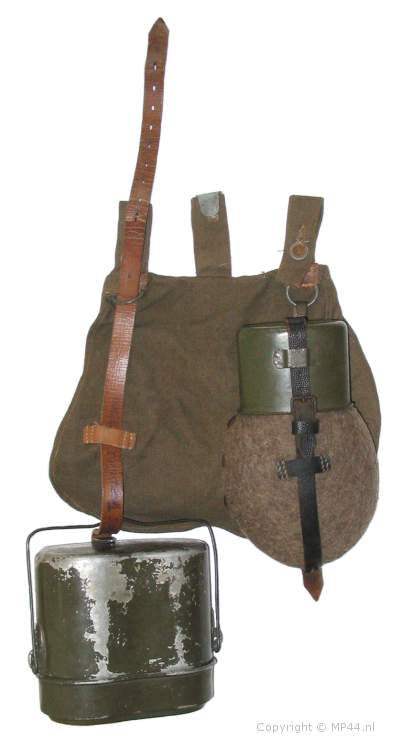 Look at that German canteen too - it's got a thin felt case and an exposed metal cup. The US equivalent had a bigger cup, but that was stored on the base of the canteen, inside a padded pouch that, again, clipped to a belt directly. It doesn't bang around when you move:  It's not just that the Allied stuff was materially rich, with special pouches; the Germans had those for things like their e-tool, ammo, etc. But the German stuff was poorly laid out, poorly secured, and often made from leather (whose quality declined as the war went on). It just wasn't as well developed. Now, yes, if they're making some sort of deliberate attack they could leave their stuff - the a-frame, the mess kit, etc - somewhere so it doesn't bounce around. But when your choice is whether or not to leave such basic items as a canteen home, your gear is bad. The smell I mentioned is from all of that wool. It has a really distinctive smell when it gets wet, sort of like wet dog.
|
|
|
|
Thanks for those photos, they're really interesting. Why does the canteen come with a cup? Can't you just drink straight from the canteen? Or is the cup for if you need to boil the water or something?
|
|
|
|
TooMuchAbstraction posted:Thanks for those photos, they're really interesting. I've got all kinds of crap if you want more photos of gear. TooMuchAbstraction posted:Why does the canteen come with a cup? Can't you just drink straight from the canteen? Or is the cup for if you need to boil the water or something? A canteen cup is VERY useful. You can, as you say, put something in it and heat it, like coffee. You can also eat from it (soup, stew, etc), use it for water for shaving/washing, that sort of thing. (Germans would probably use a mess tin for these tasks if they were available, but they weren't always on hand.) Edit to clarify: The US canteen had a larger cup, that the canteen sat in inside the cover. They also had a mess tin that was more like a divided dish. The Germans had a small canteen cup and a small mess tin, pictured above.)
|
|
|
|
Cessna posted:I've got all kinds of crap if you want more photos of gear. ...sir, this is the Milhist Thread.
|
|
|
|
Schadenboner posted:...sir, this is the Milhist Thread. Well, what do you want to see?
|
|
|
|
Cessna posted:Well, what do you want to see? What's the deal with the little trashcan the nazis all carried at the bottom?
|
|
|
|
Schadenboner posted:What's the deal with the little trashcan the nazis all carried at the bottom? Gasmask container. And god that would suck to fall wrong and land on top of.
|
|
|
|
I'd like to see a side by side comparison of as many gear pieces as you want to upload. Add in a little descriptor for each as well and that would be great. Even better would be a final showing of all the poo poo that only one side had or the different types of gear that the various sides used to solve the same problem.
|
|
|
|
Cessna posted:Let's take a close look at my back, wearing German gear circa 1942, with the full a-frame march order: How does WWII reenacting work? I can gather how musket-era military reenactments go, bunch of dudes stand in lines and shoot black powder at one another, but how do you account for all the tanks and air support and MG emplacements and squad-sized maneuver and such
|
|
|
|
Schadenboner posted:What's the deal with the little trashcan the nazis all carried at the bottom? (Hope phone pics are okay.) That's a gas mask canister. And since I mentioned the canteen, here's one of those:  It's surprisingly sturdy, made from metal that is almost as thick as a helmet. It's carried by two canvas/web straps that hook onto the main belt or sling over the shoulder. There's a catch/clamp that holds it closed, and it is completely air/water tight; as a result soldiers used them to carry their cigarettes. There's an elaborate little compartment inside the lid for spare lenses:   Here's the mask, with reproduction matches and cigarette pack. The matches are from the "club" in one of the big reenactment events. I used to reenact as a "Chain dog" (military police) because I worked/volunteered to help the event organizers. Hassling people at the club was part of the event.  At the bottom of the canister is a spring that holds down a piece of felted cloth used to clean the lenses:  Here's the canteen cup, with the complex leather strap and hook used to hang it from the d-ring on the bread-bag: 
|
|
|
|
Cessna posted:I used to reenact as a "Chain dog" (military police) because I worked/volunteered to help the event organizers. Hassling people at the club was part of the event. Oooh, show your gorget!
|
|
|
|
zoux posted:How does WWII reenacting work? I can gather how musket-era military reenactments go, bunch of dudes stand in lines and shoot black powder at one another, but how do you account for all the tanks and air support and MG emplacements and squad-sized maneuver and such We have tanks, halftracks, mgs, etc:  (That's me, again.)  Sometimes we get a bit a bit dramatic for public events. These were done for a student filmmaker from a nearby university:     We've also done airshows with "strafing" planes for air support.
|
|
|
|
Was there any noticeable difference in the weight of the gear for your average infantryman across the various nations? If there was, did they still manage to bring supplies and equipment to last a similar number of hours/days? Were they reliant on different locally sourced resources? How long could a soldier expect to be without a piece of (not firearm) gear before getting an official replacement? E: thought of another question: How was ammo distributed among say a squad on regular patrol, was there special bags for one or more of the soldiers to carry extra ammo for the whole squad? Was this universal for all the various nations? SerthVarnee fucked around with this message at 21:16 on Dec 10, 2020 |
|
|
|
Schadenboner posted:Oooh, show your gorget! I lent that to a friend, I won't have it back until post-Covid, but I'll post pics then.
|
|
|
|
SerthVarnee posted:Was there any noticeable difference in the weight of the gear for your average infantryman across the various nations? I've worn modern stuff when I was in the service, plus WWII German and Soviet stuff. There's no single answer here, because you'll carry different stuff depending on the situation and mission. SerthVarnee posted:If there was, did they still manage to bring supplies and equipment to last a similar number of hours/days? Again, situation dependent. If you're on a long march out of contact with the enemy you'll carry different (probably more) gear than you would on a patrol. SerthVarnee posted:Were they reliant on different locally sourced resources? Not really, but they'd loot stuff when you could. There are plenty of photos of, say, German soldiers stealing cows, chickens, bottles of wine, that sort of thing. SerthVarnee posted:How long could a soldier expect to be without a piece of (not firearm) gear before getting an official replacement? There's no single answer here, it entirely depends on the situation.
|
|
|
|
Cessna posted:We've also done airshows with "strafing" planes for air support. Ha that looks cool, how often do you do it
|
|
|
|
I'll try to be more specific then:Cessna posted:I've worn modern stuff when I was in the service, plus WWII German and Soviet stuff. There's no single answer here, because you'll carry different stuff depending on the situation and mission. Lets say heading train unloading point A to expected headquarters sorting area before shipping to actual front line. The poo poo you carry with you from the garrison to the duty assignment. Not the actual mission tweaked loadout, just getting dude from rear to here with his own gear. Cessna posted:Again, situation dependent. If you're on a long march out of contact with the enemy you'll carry different (probably more) gear than you would on a patrol. We'll go with the same situation, rear line transfer carrying your own general gear during transit. Any food or drink (iron rations or what have you) carried along or is that strictly controlled and distributed at specific points along the way? Cessna posted:Not really, but they'd loot stuff when you could. There are plenty of photos of, say, German soldiers stealing cows, chickens, bottles of wine, that sort of thing. I was wondering how much difference there was in expected supply of water and whether different armies would bring water trucks or barrels of water along with the supply train or if they just planned to find a stream soonish. Cessna posted:There's no single answer here, it entirely depends on the situation. Hans manages to gently caress up his gas mask canister through liberal application of alcohol and some applied physics. This happens in France sometime around....lets say august 41. Following a fairly colorful conversation with the nearest NCO, would he just be poo poo out of luck or would he "find" a replacement? Or would the army send him another one with lots of flowery words about looking after your gear in a more proper german manner in the future. Lets say the same thing happens to an american infantryman sometime in august 44. same result? (less german mannered gear care lecture I presume)
|
|
|
|
Cessna, this is important : do you own a pair of jodhpurs.
|
|
|
|
Xiahou Dun posted:Cessna, this is important : do you own a pair of jodhpurs.
|
|
|
|
SerthVarnee posted:How was ammo distributed among say a squad on regular patrol, was there special bags for one or more of the soldiers to carry extra ammo for the whole squad? For the Germans? In tl;dr terms, the German rifle squad is a microcosm of fascism. You have a leader. That leader has an immediate subordinate with a weapon that he, the leader, directs to kill enemies. Everyone else follows along to support that leader and the thug with the weapon. The leader leads the squad. In a fight he places up his machinegun and gets it to work, directing its fire. Then he tells the riflemen what to do to keep the fight going and the machinegun working. So, with that in mind, exact organization varied over the course of the war, but here's the basic starting point: 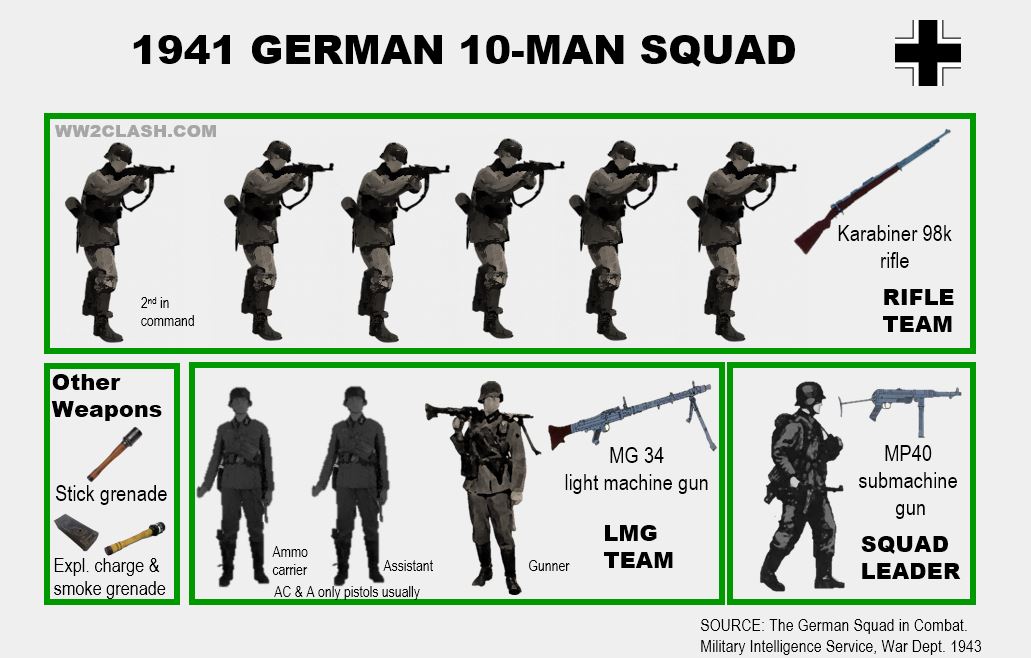 So - you've got the squad leader, with a submachine gun. Next, you've got the machinegun section. That's the immediate subordinate with a weapon. That's what does most of the actual killing. It's a gunner and two assistants, whose job is to feed the gun. Finally, you have a bunch of riflemen. Their job is to do what it takes to help the machinegun kill people. They might dig in around the machinegun to protect it from Soviet troops with pointy bayonets, they might go out and try to flank the enemy like a hunting dog flushing out birds - whatever it takes. Each of those riflemen has two ammo pouches on his belt; the hooks on the shoulder/y-straps connect to rings on the back. Each pouch is divided into three pockets. Each pocket holds two 5-round clips (yes, clips). So, 60 bullets total for each riflemen, although they'd certainly pack more in their pockets if they could. 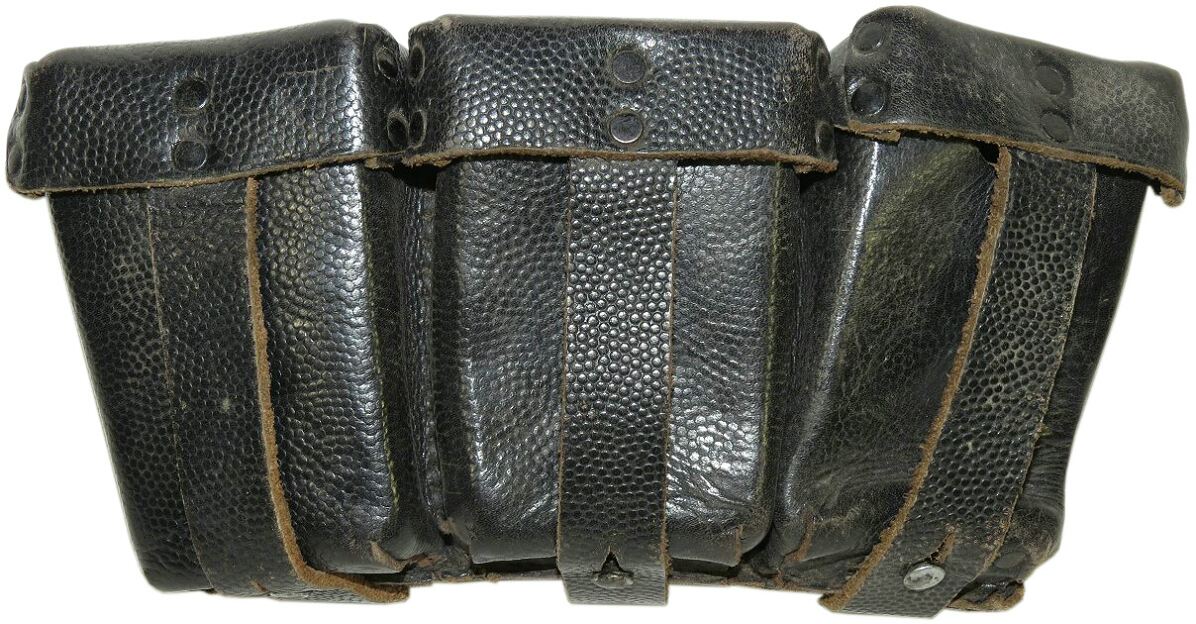 The machinegun has ammo in ammo boxes, drums with a belt inside, or loose belts. On paper the machine gunner carried a 50-round belt drum. The assistant machine gunner carried 4 additional 50-round belt drums. And, like I said, it is the job of the riflemen to support that machinegun, so odds are that some or all of them will also be carrying a 300-round box or more of machinegun ammo - again, their job is to support that machinegun: Cessna fucked around with this message at 06:07 on Dec 11, 2020 |
|
|
|
The Lone Badger posted:IIRC early grenadiers were burly chaps with special training who threw iron bombs. Were those the bombs that look like this? 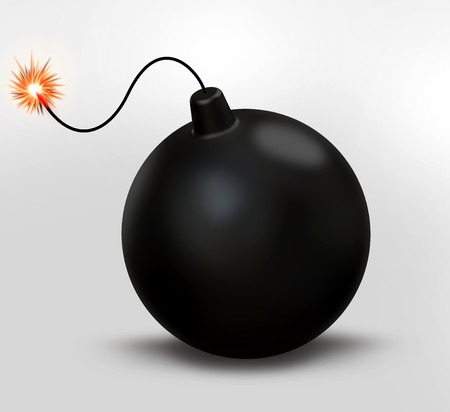
|
|
|
|
So in a prolonged firefight who would be saddled with the job of getting more ammo? By prolonged i mean a fight where the leader is reasonably sure that the first half of their mg ammo is long gone and it doesn't look like the fight is over when the other half runs out. Are the assistant loaders going for a run, do the rifleman detach to go find more ammo, do the mg team stop firing and the rifles get told to work harder, does the whole squad call in a replacement squad or a bunch of supply dudes? Lets say its something like the battle of Caen. If I recall correctly, that fight took them a while to finish. I know the situation will be throwing ridiculous curve balls at any attempt at a general answer here, but was is the "by the book" expected way to handle an effective, correctly ammo-conserving mg team simply running out of ammo due to the length of the fight? Also, at what point is squad considered officially combat impaired or combat ineffective? If the gunner gets hit I presume a rifleman or assistant can take over. Since the squad is the leader with his thug and their rifle boys, I don't expect the squad to be considered out of the fight until the mg is silent. (maybe if the leader is downed?) This is great stuff, thanks for bothering to reply to my stream of questions Cessna
|
|
|
|
SerthVarnee posted:Lets say heading train unloading point A to expected headquarters sorting area before shipping to actual front line. The poo poo you carry with you from the garrison to the duty assignment. Not the actual mission tweaked loadout, just getting dude from rear to here with his own gear. For the Germans you're looking at roughly what I have in this pic:  That's about 45 pounds of gear. A-frame with zeltbahn (shelter section/half), tent poles, a little bag with spare underwear, socks, and a sweater. On the belt you've got an e-tool, a bayonet, a canteen, ammo pouches, a messkit, and a breadbag. The "breadbag" is a sort of catch-all, it's sort of like a purse that carries your stuff. Sausages wrapped in wax paper, another pair of socks, your amphetamine-saturated chocolate bars, etc. Edit: You also could add a "tournister," a backpack with spare uniforms, for another 10-20 pounds. SerthVarnee posted:We'll go with the same situation, rear line transfer carrying your own general gear during transit. Any food or drink (iron rations or what have you) carried along or is that strictly controlled and distributed at specific points along the way? Still situation dependent, but broadly speaking you'd carry snacks in your breadbag like I mentioned above, plus you'd stop as often as practically possible for a meal at a field kitchen (gulashkanone): 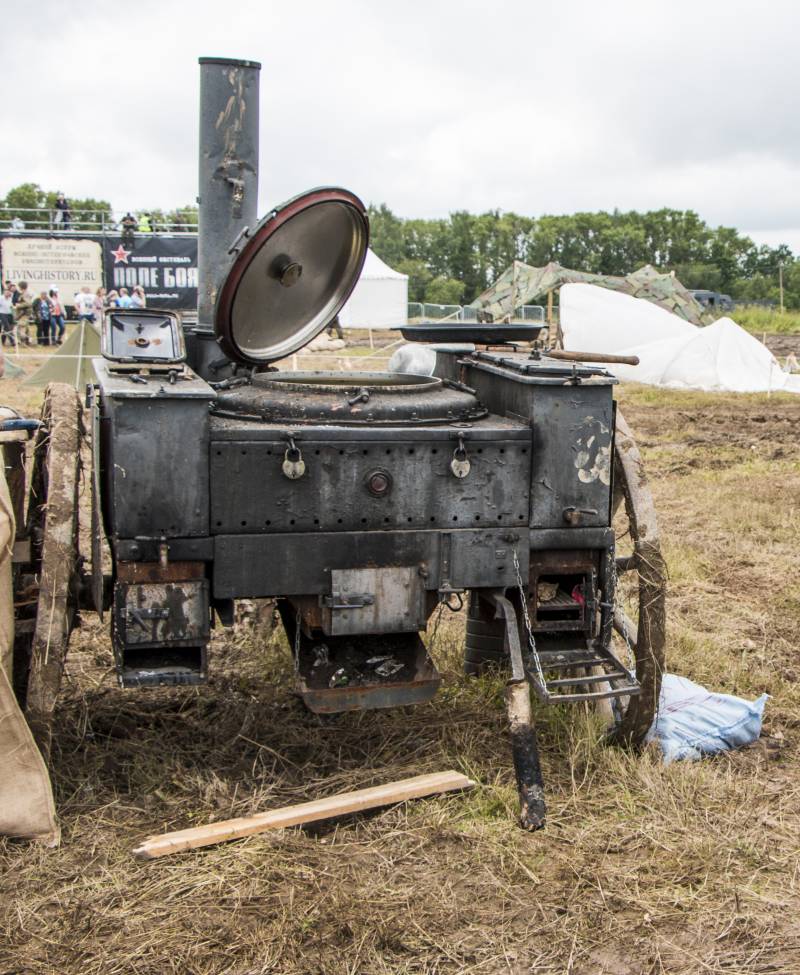 It's pretty much a stove on wheels. The Germans were big on stews (goulash). Anecdotally the Germans were jealous of the American pre-packed rations (K-rations, etc) for their convenience, but the American GIs envied the fact that when the Germans got a meal it was hot and hearty. As an aside, my reenactment group had one of these (gulachekanone) and cooked on it. SerthVarnee posted:Hans manages to gently caress up his gas mask canister through liberal application of alcohol and some applied physics. This happens in France sometime around....lets say august 41. Following a fairly colorful conversation with the nearest NCO, would he just be poo poo out of luck or would he "find" a replacement? Or would the army send him another one with lots of flowery words about looking after your gear in a more proper german manner in the future. I don't have exact figures, but I can tell you that each German soldier had a "soldbuch," a little passport sized book often called a "paybook." There are pages inside the book are pages where every piece of gear, down to individual pairs of socks, it tracked and itemized. Over the years I've collected old "soldbuchs" from ebay.de. I thumbed through a few of them just now and found one out of eight where the owner got a new gas mask can. Take that entirely anecdotal and incomplete evidence as you will. SerthVarnee posted:Lets say the same thing happens to an american infantryman sometime in august 44. same result? (less german mannered gear care lecture I presume) The GIs famously ditched their gas masks (there's a Willie and Joe cartoon about this). The Germans didn't, supposedly because they took the prospect of chemical warfare more seriously as a result of their more extensive experiences in the trenches of WWI (Hitler was gassed himself). But I can confidently state that American soldiers had much better access to replacement gear than pretty much any other army in WWII. Cessna fucked around with this message at 06:09 on Dec 11, 2020 |
|
|
|
SerthVarnee posted:So in a prolonged firefight who would be saddled with the job of getting more ammo? By prolonged i mean a fight where the leader is reasonably sure that the first half of their mg ammo is long gone and it doesn't look like the fight is over when the other half runs out. Remember those riflemen? SerthVarnee posted:Also, at what point is squad considered officially combat impaired or combat ineffective? When there is a soviet flag flying over the reichstag. That is to say, they really didn't have the option to say "okay, we're down X men, we're done for the day." If there was a lull between battles rifle squads (and up) might be reconstituted into re-built formations, but the Germans were a bit more hesitant to do this than other armies. In contrast, the Soviets were much more willing to do this.
|
|
|
|
SerthVarnee posted:I'll try to be more specific then: There's kind of an interesting theory, which is basically that the average infantryman's loadout has stayed pretty constant over the millenia. You basically just load the dude up with whatever he can reasonably carry (it increases over time because people get bigger and stronger due to advances in nutrition), and if gear gets lighter, the weight just gets replaced by additional gear. I can't find it but there was a really good slideshow layout of British-based infantry kit through the centuries which included like Roman era, on through to modern.
|
|
|
|
Awesome! thanks for all the details. Okay so I got this mental image of the army being a fuckton of running to get to where you have to wait for the truck that takes you to the place that gets your gear dirty and then takes you back so you can clean it all. Some shooting may also be involved here and there. Did they bring their own maintenance/cleaning material or did they go draw that from the quartermaster when there were deployed to a post? How does the answer vary from garrison duty vs. front sector, but actually rear line duty vs. front line first/second line? Is there any change in the way this is done compared to ww1?
|
|
|
|
SerthVarnee posted:Okay so I got this mental image of the army being a fuckton of running to get to where you have to wait for the truck that takes you to the place that gets your gear dirty and then takes you back so you can clean it all. Some shooting may also be involved here and there. Are we talking about modern stuff, like a US soldier in Iraq? For Germans in WWII it was either marching on dirt roads or riding in trains. Trucks were comparatively rare and only in some units. Most of their soldiers just marched. SerthVarnee posted:Did they bring their own maintenance/cleaning material or did they go draw that from the quartermaster when there were deployed to a post? I'll let the WWI people handle that part of the question. For WWII Germans - well, early on in the war there are plenty of photos of them in barracks and they're relatively clean:  Most of their time, from what I can piece together, was spent cleaning, doing exercise, marching, having inspections, listening to Wagner, and attending endless lectures on how to be more of a racist piece of human trash. At the front, well, you're fighting. If you get a chance you wipe off the dirt, then go back to fighting.
|
|
|
|
KYOON GRIFFEY JR posted:There's kind of an interesting theory, which is basically that the average infantryman's loadout has stayed pretty constant over the millenia. You basically just load the dude up with whatever he can reasonably carry (it increases over time because people get bigger and stronger due to advances in nutrition), and if gear gets lighter, the weight just gets replaced by additional gear. I can't find it but there was a really good slideshow layout of British-based infantry kit through the centuries which included like Roman era, on through to modern. I think this might be what you're thinking of with the pics of kit through the ages: https://www.thomatkinson.com/inventories
|
|
|
|
Cessna posted:
There is a scene in the Finnish movie The Winter War where the main characters are taken by trucks to a starting point of a counter attack. They remark that since they get a ride they must be heading for the deep end (they are correct).
|
|
|
|
Cessna posted:Are we talking about modern stuff, like a US soldier in Iraq? Good question, has the loadout changed between the two scenarios? does one of the two examples make the soldier carry his own gear-cleaning toothbrush and essential oils? Cessna posted:
You said yourself that maintenance was the name of the game (when we were arguing about crewless tanks). I am trying to figure out how many of the maintenance supplies were carried along by the troops and how they were expected to replenish those supplies. I remember reading a book on the first world war where a german sailor bitched about being unable to get the stuff he needed to maintain and repair his uniform (he was stationed on one of german high seas warships parked in harbor for almost the entire war). What really pissed him off was the fact that he was to get his materials from the ship's stores, but there weren't any materials to be had. When he was found a fault during inspection for having poorly maintained uniform, he tried to argue that he was not supplied with any materials to do the maintenance and was told: "poor excuse! Do better!" So a sailor gets his stuff from the ship. The infantry gets their stuff from the....quartermaster back in garrison? sketchy looking dude in a back alley somewhere near Lodz? squad leader dressed up like Nazi Santa? nearest non-bombed out shop? Does replacement rags for the oiling and lubing and cleansing of the empero......Fuhrer's god given rifle go in the sold book?
|
|
|
|
Lobster God posted:I think this might be what you're thinking of with the pics of kit through the ages: https://www.thomatkinson.com/inventories yeah thats it, thanks!
|
|
|
|
SerthVarnee posted:Good question, has the loadout changed between the two scenarios? does one of the two examples make the soldier carry his own gear-cleaning toothbrush and essential oils? A modern soldier is MUCH better equipped. Admittedly my personal experience is outdated, I got out in the 90s. And I was an armor guy, so I wasn't working under the constraints of an infantry soldier. (Weight wasn't a consideration, so we'd carry all kinds of crap, see below.) In tl;dr terms, modern stuff weighs less and takes up less space, so you can carry more/different stuff. SerthVarnee posted:You said yourself that maintenance was the name of the game (when we were arguing about crewless tanks). I am trying to figure out how many of the maintenance supplies were carried along by the troops and how they were expected to replenish those supplies. This is sort of an apples and oranges thing if you're comparing infantry to armor. For infantry, weight is crucial. On a patrol you won't carry anything if you can help it. You carry the essentials. Think in terms of ammo, water, and maybe a spare pair of socks. For armor, you carry whatever you can cram in. Every vehicle has a full tool box. You also have what we called "OVM gear," (Onboard Vehicle Maintenance). Picks and shovels, crowbars, boathooks, an axe, ropes, tow cables, tow shackles, stuff for the suspension, all kinds of stuff. Plus every vehicle has "unofficial" stuff crammed in wherever it will fit; wire brushes and rags, cleaning supplies, spare 9/16" bolts, buckets, you name it. And you might carry spares, like extra road wheels. Plus crates of food, gallons of water and spare oil, whatever you can pack in. And ammo, of course. The idea of not bringing something like spare/clean uniforms or food is anathema. Seriously, there is no comparison. With zero exaggeration and from personal experience: For an infantryman, luxury is a clean pair of socks and underwear. For armor, luxury is a cooking stove, a cooler full of ice and drinks, a lawn chair, a section of astroturf, a beach umbrella, and a radio wired into the batteries. SerthVarnee posted:I remember reading a book on the first world war where a german sailor bitched about being unable to get the stuff he needed to maintain and repair his uniform (he was stationed on one of german high seas warships parked in harbor for almost the entire war). What really pissed him off was the fact that he was to get his materials from the ship's stores, but there weren't any materials to be had. When he was found a fault during inspection for having poorly maintained uniform, he tried to argue that he was not supplied with any materials to do the maintenance and was told: "poor excuse! Do better!" WWI Germany was starving due to the naval blockade. SerthVarnee posted:So a sailor gets his stuff from the ship. The infantry gets their stuff from the....quartermaster back in garrison? sketchy looking dude in a back alley somewhere near Lodz? squad leader dressed up like Nazi Santa? nearest non-bombed out shop? Does replacement rags for the oiling and lubing and cleansing of the empero......Fuhrer's god given rifle go in the sold book? Stuff, when available, would come through the army's supply system or, for the Wehrmacht, looted from the locals. Cessna fucked around with this message at 23:24 on Dec 10, 2020 |
|
|
|
If you mean the nitty gritty on how they got the stuff up near Hans and Fritz, I believe most of the supplies on the Eastern front were hauled by horse wagon. There were some trucks but I have to assume those were for critical supplies. I think the only fully motorized army was the USA. They had some horses but not, like, for hauling supplies as a primary mover.
|
|
|
|
|
Thanks for all the good info man! I gotta go get some sleep but I'll try to think up some more (and more coherent) questions for tomorrow.
|
|
|
|

|
| # ? Apr 17, 2024 00:32 |
|
KYOON GRIFFEY JR posted:There's kind of an interesting theory, which is basically that the average infantryman's loadout has stayed pretty constant over the millenia. You basically just load the dude up with whatever he can reasonably carry (it increases over time because people get bigger and stronger due to advances in nutrition), and if gear gets lighter, the weight just gets replaced by additional gear. I can't find it but there was a really good slideshow layout of British-based infantry kit through the centuries which included like Roman era, on through to modern. Lobster God posted:I think this might be what you're thinking of with the pics of kit through the ages: https://www.thomatkinson.com/inventories Here's a gallery that had a few more pics: https://imgur.com/gallery/YV3M2
|
|
|

























